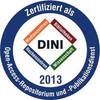Preview |
PDF, English
Download (2MB) | Terms of use |
Abstract
Perceiving events as they unfold in the world around us involves recognizing features of human actions, relations between event participants, and relations between different states of the event participants as they change over time. This is achieved by associating percep-tual experience with generalized memory structures, a mental capacity which is attributed to temporarily maintaining event representations in working memory. Often, these non-linguistic memory structures are captured in terms of their linguistic expression as event structures, sets of thematic roles, schemata, or frames. However, when these concepts form the sole basis for empirical investigation, fine-grained features of event representa-tion are lost, giving rise to challenges for cognitive sciences in providing consistently ap-plicable models. The aim of this dissertation is to provide a theoretical basis for identify-ing overlooked aspects in event representation and to experimentally test central hypothe-ses generated from these ideas. Drawing on assumptions laid out in ontology, psycholo-gy, and linguistics (especially focusing on theory of human action, event representation, lexical semantics, and Construction Grammar), it is first explored how cognitive represen-tation and verbal expression of actions and events are multilayered in nature: Our under-standing of actions and events that coincide in time and space form “thick” representations consisting of layers that we switch our attention between or superimpose. This basic as-pect of event representation will be investigated through the concept of cascades. Second, since events are defined by the changes their participants undergo over time, their internal structure is temporally complex. This dynamic component of events will be explored through the concepts of Argument-time Structures and Intersecting Object Histories. In terms of cognitive representation, it is predicted that an event comprises multiple temporal phases containing different states of its event participants, while language provides means of highlighting certain phases. For instance, speakers of English can express different aspectual properties of events, such as whether an event is ongoing (progressive aspect) or completed (perfect aspect). This idea is tested in the experimental part of the disserta-tion. By using a modified visual-world-paradigm, grammatical aspect markers on double-object verbs were manipulated to investigate whether and how quickly aspect contributes to the mapping of linguistic form onto temporal properties of transfer-of-possession event representations. Results from Experiment 1 show that listeners use aspect cues to predict and integrate states of referents associated with different temporal event stages. In Exper-iment 2, the conventional double-object verb from Experiment 1 were replaced by novel verbs in double-object sentence forms to determine whether syntactic structures can be mapped onto event structure without access to lexicalized verbs. This was done to disso-ciate which components in the sentence (syntactic vs. lexical) can be relied on in event comprehension. Results show that sentence meanings can be derived from syntactic struc-tures in the absence of a lexical verb. Together, the theoretical analyses and experimental results contribute to an understand-ing of actions and events that goes beyond simple semantic categorization such as themat-ic structures or event structures, but which takes a fine-grained approach to the underlying complex cognitive structures. This offers the possibility for future research to investigate in more detail the structures that are mentally instantiated during language processing, both concerning conceptual representation and linguistic encoding.
| Document type: | Dissertation |
|---|---|
| Supervisor: | Stutterheim, Prof. Dr. Christiane von |
| Place of Publication: | Heidelberg |
| Date of thesis defense: | 11 July 2024 |
| Date Deposited: | 29 Jul 2025 13:18 |
| Date: | 2025 |
| Faculties / Institutes: | Neuphilologische Fakultät > Institut für Deutsch als Fremdsprachenphilologie |
| DDC-classification: | 150 Psychology 400 Linguistics |









